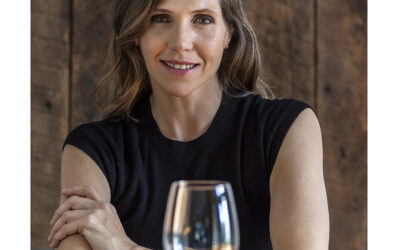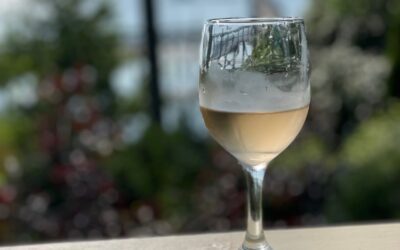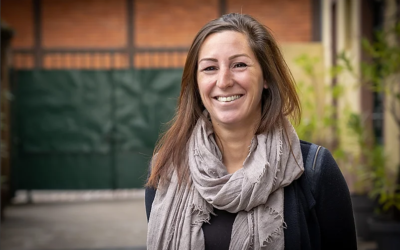VC’S CHEF DES CAVES, UNCORKS THE UNIQUE SAVOIR-FAIRE OF THE ICONIC CHAMPAGNE HOUSE WITH THE YELLOW SOUL
If you were to name a champagne brand, chances are the first name that would probably
naturally pop into your mind would be Veuve Clicquot. Blending that wow factor with that
certain French je ne sais quoi, Veuve Clicquot is most people’s go-to champagne.
A crowd pleaser, the house has carved its name into Champagne history, and become a reliable
household name since its inception in 1772.
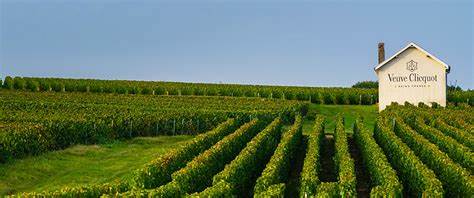
How many of you when perusing the champagne aisle at your local wine store automatically.
lock eyes with the iconic Yellow Label? There’s just something about that charismatic bottle
that has intrinsically become synonymous with quality, consistency, boldness, and refinement.
But beyond the brand awareness and name recognition, that “something” is in all actuality
“someone”: the Chef des Caves, the genius behind the exquisite bubbles and delicate perlage
whose name is Didier Mariotti.
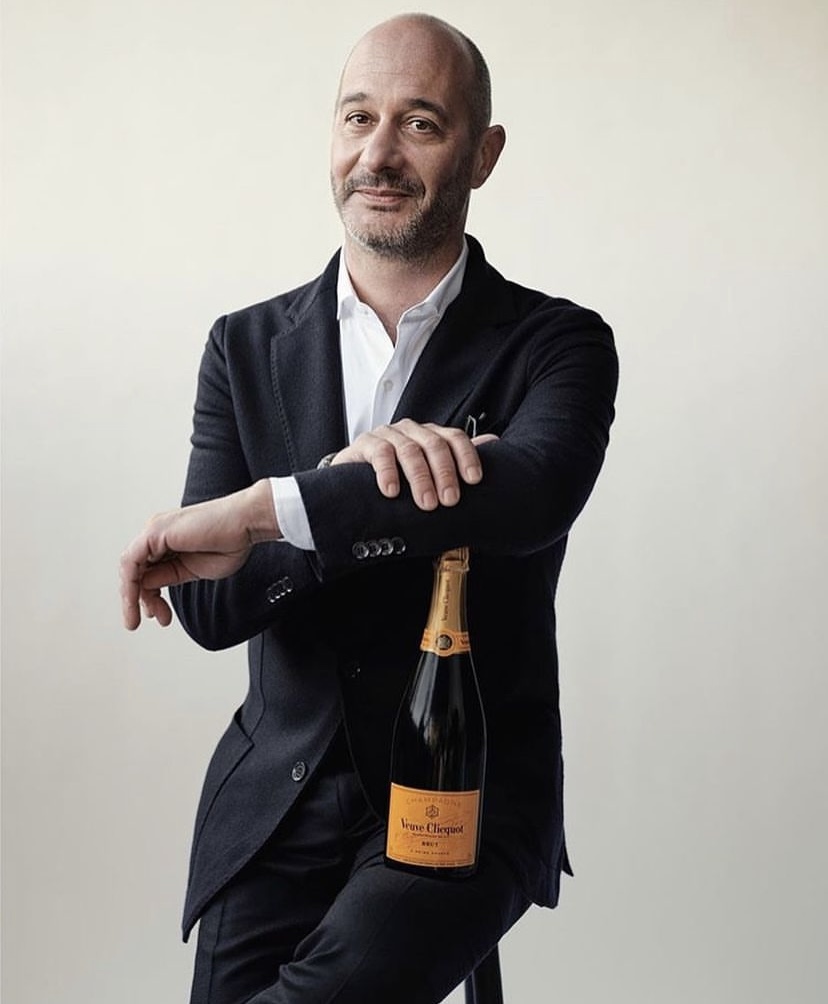
The 11th Chef des Caves at Veuve Clicquot, Didier Mariotti has been making the most gorgeous
versions of Veuve Clicquot’s world-renown wines since 2019. Of Burgundian and Corsican
origins, Mariotti has remarkably made his marks in the Champagne industry with a career
running the gamut from Moët et Chandon, Nicolas Feuillatte, G.H. Mumm to now Veuve
Clicquot.
Agricultural engineer and oenologist, Mariotti is the guarantor and gatekeeper of the inimitable
style and savoir-faire of Veuve Clicquot, preserving the House jewel that is the incredible library
of reserve wines and the stunning cellars. He perpetuates Madame Clicquot’s raison d’être
“Only one quality, the finest” by continuing to elaborate the House’s emblematic cuvées with
the magnificent Pinot Noir as the staple grape variety of the house.
Champagne reveres its past and rightfully so. It boasts so many larger-than-life characters who
have impacted the champagne world and the history of France.
Barbe Nicole Clicquot Ponsardin better known as Veuve Clicquot (widow Clicquot) needs no
introduction. A true iconoclast, she broke so many barriers at a time when women were
considered second class citizens. Her “widow” status permitted her to take over the reins of her
husband’s business, which she did admirably becoming one of the world’s first celebrated
international businesswomen. Her world-altering contributions to the champagne industry are
immeasurable and still prevail today.
Suffice it to say, Maison Veuve Clicquot is one of the historical, influential, and respected
champagne houses that has unapologetically catapulted Champagne to a meteoric rise giving it
its undisputed reputation, success, and prestige on the world stage.
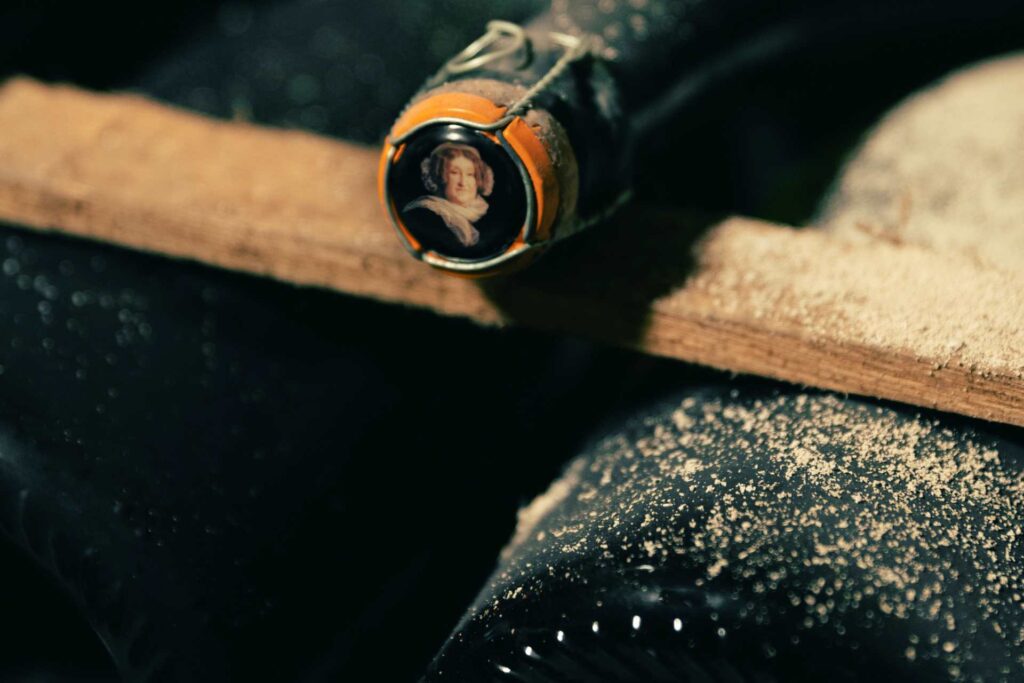
Today whenever the name Veuve Clicquot comes up in a conversation, Didier Mariotti’s name
should come up too. Mariotti’s mastery of his art ensures every bottle of champagne with the
distinctive Veuve Clicquot personality, character, and quality.
Mariotti’s passion is encapsulated in one motto: “TASTING.”
As a Chef des Caves, he excels at the art of blending. Just like a painter, a chef de cave crafts his/her champagnes with the understanding that each component at every step of the champagne making process is likened to a different color on the artist’s palette, paying extra consideration and attention to how each “color” will harmonize and blend together to complete an exquisite cuvée.
Perpetuating the spirit of Madame Clicquot, Mariotti continues her quest for excellence. The
cellar master is an immensely gifted artist who is not only passionate about his craft but as well
about the legacy he will leave behind. The understanding that the champagnes he designs
today will, with time, refine and express their innate elegance and tell an extraordinary story to
the generations that follow.
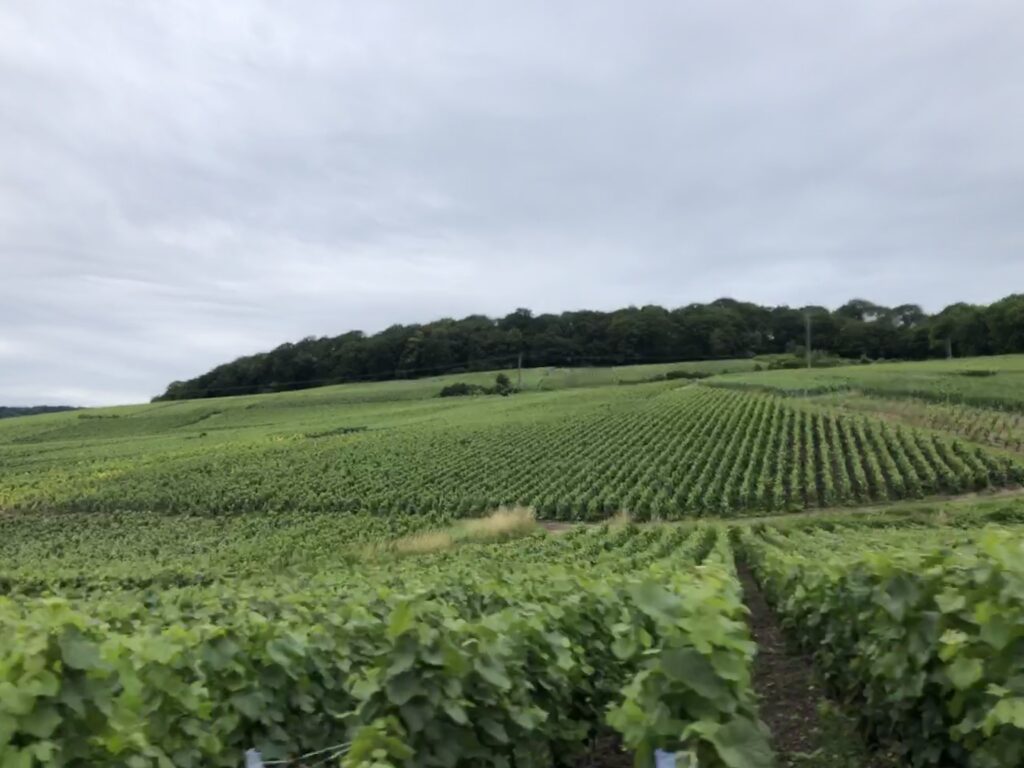
It was such an incredible honor for me to interview this rock star Chef de Cave.
Didier Mariotti and I spoke about the history and legacy of the Maison, his role as the cellar
master, what goes into the crafting of Veuve Clicquot’s signature style cuvées and how the
House is coping with climate change, among many other things.
. You have quite an impressive Champagne Curriculum Vittae starting with Moët et Chandon,
Nicolas Feuillatte, then G.H. Mumm and now Veuve Clicquot. Was it hard to break into the
Champagne industry as an outsider? How did this incredibly fascinating Champagne journey
begin?
It was not easy for me to move to Champagne. But it was my personal choice, and I was lucky to
have received a warm welcome. My decision to stay in Champagne following my end of study
internship in 1995 was motivated by my encounter with Dominique Foulon (cellar master at
Moët et Chandon) and Richard Geoffroy.
. Your grandfather was originally from Corsica & your grandmother from Burgundy.
You come from the smallest but most independent and creative generation, Gen X. How does
this eclectic cultural heritage express itself in your work ethic and add value/meaning to your
craftmanship?
Good question but a hard one to answer.
I feel that my inspiration comes from my childhood, my education but as well from the many
connections I have made throughout my professional career. I am fortunate to be doing a job I
am passionate about.

. You were extremely fortunate throughout your professional career to always be surrounded
by important figures who sort of became mentors to you – Dominique Foulon (Chef de Cave at
Moët), Richard Geoffroy (Chef de Cave at Dom Perignon) and Dominique Demarville (Chef de Cave first at G.H. Mumm then at Veuve Clicquot) – how have these experiences & relationships influenced you and your craft?
Yes, I have been enormously blessed.
I have learned so much and been inspired by their visions, their approach method, the way they
express the style of the Champagne houses they worked at, their comprehension of the wines
and vintages. The wine world is a world of exchange and sharing. You must listen in order to
craft the cuvée of the House – listen to your team and to nature as it offers very different
vintages from year to the next.
. You left Mumm in 2019 to become the 11 th Chef des Caves at Veuve Clicquot.
Dominique Demarville (formerly at G.H. Mumm too), passed on the torch to you in a matter
of four months. How much pressure did you feel in such a short amount of time to learn how
to perpetuate a world-renown tradition that has been passed on for well over 200 years?
I try to not think about the pressure and instead focus on the work that I need to do relying on
my passion and experience. You must be both humble and confident – humble because nature
is more powerful than all of us, and confident to be able to elaborate the different blends of the
House.
. The history of Barbe Nicole Ponsardin is one of a fierce and smart businesswoman who
boldly and fearlessly defied the odds to become one of the world’s first international
businesswomen. She broke barriers and accomplished milestones at a time when women
were considered second class citizen. How has that “boldness” carried through over the years
in the Veuve Clicquot Champagnes and the culture of the house?
Madame Clicquot inspires us every day.
She invites us to explore, to try and never stay within our comfort zone.
And above all, she reminds to always adhere to her mantra: “Only one quality, the finest.”
. Veuve Clicquot is known to have one of the largest reserve wine libraries in Champagne.
How did you familiarize yourself with the entire catalog? And how has this plethora of
reserve wines influenced your own personal approach to the art of assemblage?
The discovery of this exceptional collection of reserve wines has been a true revelation for me.
We taste our wines every 6-month to follow their evolution.
This library offers a lot more possibilities and options to craft our blends because we store our
reserve wines by cru, grape variety, and vintage. We thus have at our disposal a multitude of
different colors to guarantee the quality and consistency of our Yellow Label.
. Two of the most emblematic Veuve Clicquot cuvées are the Yellow Label and La Grande
Dame. The first is the signature style of the House, a non-vintage, the second is its vintage
prestige Cuvée. What goes into the elaboration of these champagnes to ensure they live up
to their reputation. Veuve Clicquot is known for being Pinot Noir centric but beyond the
choice of grape, what contributes to the quality and complexity of these legendary cuvées?
Art of aging
Art of Blending
As I mentioned above, for our Yellow Label, our fantastic collection of reserve wines ensures
that we deliver on the expected quality and consistency of taste.
The Grande Dame is the spirit of Madame Clicquot – her strength, her energy, and her love of
Pinot Noir. Since 2008, La Grande Dame expresses our love of Pinot Noir even more as the
blend is now 90% made of Pinot Noir. The elaboration of all our blends rests on the tasting of the “Vins Clairs” (clear wines). It is this tasting that allows us to describe with utmost precision
each wine and foresee what it can bring to the blends.
I don’t have any rules but one principle: tasting.
. Of course, we can’t talk about Veuve Clicquot without talking about Rosé – it is very much
part of the house’s DNA and history. Madame Clicquot is credited with inventing the first rosé
d’assemblage in 1818. Can you share with us the story behind the bottle and bubbles? What
goes into the crafting of the Rosé?
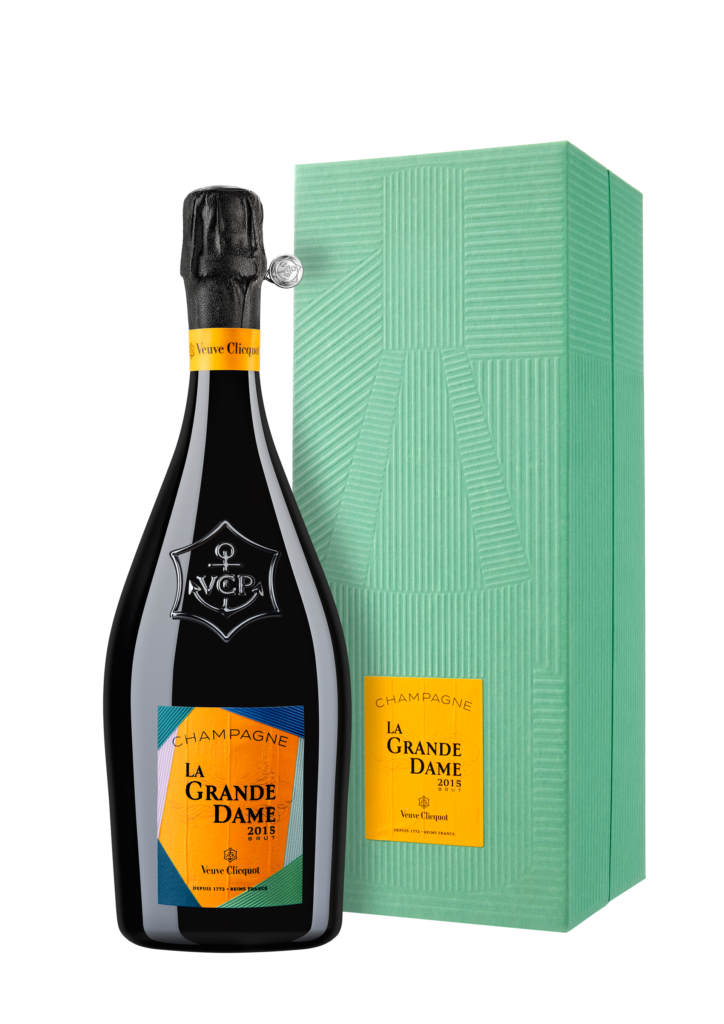
Madame Clicquot used to say that she was first tasting her rosés with her eyes.
Not satisfied with the color and the constancy of the shades, she decided to go to Burgundy to
understand and learn how the Burgundians elaborated their red wines. Upon her return to
Champagne, she selected different parcels in the village of Bouzy to craft her red wines which
she then opted to blend to her white wines thus creatin in 1718 the first Rosé d’Assemblage
(blending). One of the parcels she picked is the “Clos Colin” which to this day is still the only
parcel we use to produce La Grande Dame Rosé. In Bouzy we have a winery solely dedicated to
the crafting of our red wines.
. There’s a been a shift in recent years among a few Maisons de Champagne to cease
production of their traditional “Flagship” cuvée for a multi-vintage blend. The allure of the
multi-vintage is to be freed from the uniformity and consistency commanded by the non-
Vintage nomenclature to produce a champagne that highlights the best attributes of a
specific harvest. Jacquesson does it with its Cuvée seven-series & more recently Roederer
with his “Collection”. Can you ever see Veuve Clicquot following suit and retiring its iconic
Yellow Label?
We will never retire our legendary Yellow Label. It is THE iconic Champagne of Madame
Clicquot. But I absolutely understand the approach Jacquesson, Roeder or Lallier have with
their champagnes. We have the same approach vis-à-vis our vintages and Grande Dame as well
as with the different series of our Extra Brut Extra Old, which is a multi-vintage.
. There is this sentiment that the grower champagne movement is more in tune with the
concept of terroir than the bigger houses. How important is the notion of terroir to you and
why does it matter?
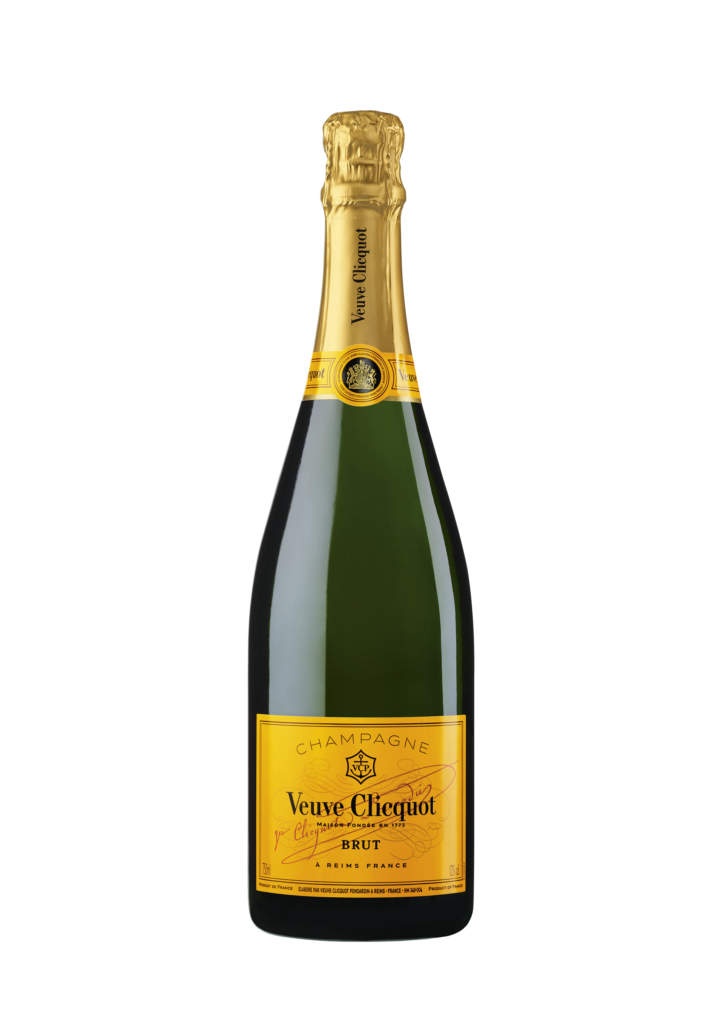
The notion of terroir is as important for winegrowers as it is for a house the caliber of Veuve
Cliquot. This move towards a more artisanal winegrowing approach is extremely important when it comes to showing the diversity of the wines of Champagne. That method puts
winegrowers’ village and terroir front and center. And at Veuve Clicquot we’re laser-focused on
putting the spotlight on the art of blending and our savoir-faire.
In this fashion we harmoniously complement each other, and both work to beautifully express
Champagne’s savoir-faire and savoir-vivre.
. How is Veuve Clicquot adapting to Climate Change? What are the measures taken to
embrace a more environmentally friendly approach in the vines and in the cellar?
We’re all very invested both at the corporate level of Moêt Hennessy with the “Living Soil”
program and in-house at Veuve Clicquot.
We were the first Champagne house as early as 2017 to cease the utilization of herbicides. We
are committedly working to reduce the use of chemicals at all stages of the elaboration process.
We have a technical équipe in place to help our partners modify their viticultural practices and
embrace a greener approach to winegrowing. We also have parcels grown organically. We are
looking to reduce our bottle weight. And are also working with solar energies and geothermal
energy.
Overall, we have a vast program in place that seeks to effectively reduce our carbon footprint
and cope with all the environmental challenges.
. Dominique Demarville introduced a new family member in 2017 with the release of the
Extra Brut Extra Old – Veuve Clicquot’s first ever official low-dosage cuvée. Do you have any
plans to create a new cuvée? Perhaps a zero dosage?
Maybe ��
. What legacy do you hope to leave in the history of Veuve Clicquot and the overall
Champagne world?
I hope that the next generations will find an immense pleasure in savoring the champagnes we
would have stored for maturation in the Veuve Clicquot “œnothèques. »
. What is the best advice you were given along the way?
Champagne is a wine, discover it and enjoy it as such.
. What is your most memorable champagne moment?
I have so many magical moments in mind, it is hard to pick one. But every time I see a smile
emerge on someone’s face, I tell myself that it is a beautiful moment.
For more information got to: https://www.veuveclicquot.com/en-us
Follow Didier Mariotti at: @ didier_mariotti
Veuve Clicquot: @VeuveClicquot

